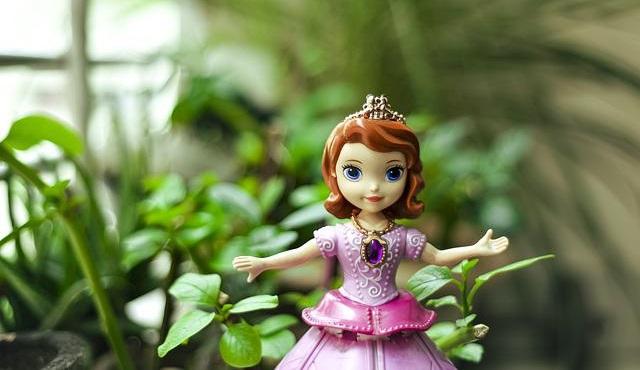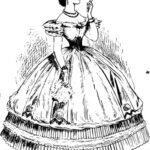
Mary de Morgan’s “A Toy Princess” is a fairy tale that revolves around the social norms and expectations of women in the Victorian period, and it is harshly critical of them; in this regard, the story is certainly a feminist fairy tale. The main point of criticism by de Morgan is the accepted feminine ideals of that period: she presents a masculine view in which women should be completely obedient and silent, as these attributes are highlighted critically and sardonically as the desired feminine model.
There are multiple examples in the text of de Morgan’s censure of Victorian society, which are demonstrated through not-so-subtle irony. For instance, a while after Taboret switches the real princess, Ursula, with the toy princess, “all said she was vastly improved” because “she was never naughty, and scarcely ever spoke” (page 169) – a clear critique of Victorian society in which women are socially esteemed for their required oppressed demeanor when they act in a conformingly silent and meek manner. Another example of de Morgan’s denunciation of the oppression of women and the suppressed comportment according to which they are expected to behave is the reactions to Ursula’s behavior when she returns to the court and sees her father, the King, for the first time since the exchange. Ursula, with “no other bidding,” immediately runs to kiss and hug him while “all the courtiers shut their eyes and shivered” (173); her act is perceived as utterly improper according to the period’s confining standards, even in such an understandably emotional event. Through such similar ironical instances, de Morgan establishes her criticism of Victorian society’s treatment of women, and thus the text is interpreted as a feminist fairy tale.
While de Morgan does criticize Victorian society, she herself also seems to fall into a couple of patriarchal norms that could be construed as anti-feminist from a more modern perspective. The name of the wife of Mark the fisherman is never mentioned and even he refers to her only as “Wife” (169), as if her entire being is solely defined by her relation to him. Additionally, Ursula’s positive contributions to their household, which they “could not have done without her,” are aligned with anti-feminist traditional housework division such as “clean[ing] the house” and “needlework” (171). Those sorts of remarks and comments could show that while de Morgan does intend to excoriate the expectations of women in Victorian society, she herself is still deeply entangled within these same inescapable expectations.
Overall, I believe that “A Toy Princess” is a feminist fairy tale, in spite of its flaws. The general feminist message surpasses the ingrained anti-feminist elements of the story, especially when considering how socially subversive it is in relation to the period in which it was written and published.
Work Cited
Zipes, Jack, ed. Victorian Fairy Tales: The Revolt of the Fairies and Elves. New York: Routledge, 1989.



